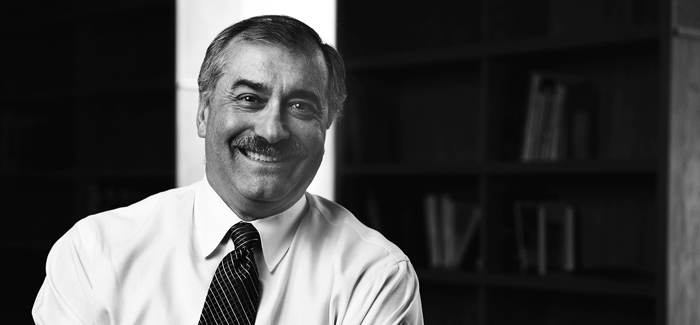
Dean Rocky Kolb. (Courtesy Physical Sciences Division)
Building preeminence.
In 1923, Robert Millikan won the Nobel Prize in physics for measuring the charge of the electron. He determined this fundamental physical constant, which influenced all physics that followed, while working in a University of Chicago laboratory with equipment and resources suited precisely for his needs. But the laboratories of yesterday can’t meet the needs of today. As science advances, so must facilities, becoming more powerful, precise, and indispensable to a vast array of research fields.
In the past decade, the Division of the Physical Sciences has ushered in tremendous growth after half a century of impressive but aging infrastructure. Within five years, every PSD department will have new or renovated facilities. In addition to updating and maintaining core facilities—like nuclear magnetic resonance, crystallography, mass spectrometry, a machine shop, an electronics shop, an engineering center, a new clean room in Searle Chemistry Laboratory, and even a graphic arts design studio and print shop—the PSD has also invested in new construction. The Gordon Center for Integrative Science (2006) is a powerhouse for interdisciplinary research, and the Eckhardt Research Center, opening this fall, will further bolster UChicago’s cooperative spirit, hosting some physical science departments and institutes, with a focus on precision science and collaboration-minded space design.
In another sign of our growing footprint, the division has pledged a significant stake in the Giant Magellan Telescope (GMT), a supergiant earth-based telescope under construction in Chile. Astronomer Wendy Freedman perfectly describes why access to the most leading edge technology is essential to science: “Since Galileo turned a telescope to the sky in 1609, every time there’s been a jump in capabilities or that next generation of telescopes, we’ve made discoveries, without exception.”
We provide state-of-the-art instrumentation so that PSD scientists can fulfill their potential, and such facilities attract promising new and accomplished researchers who want access to the best technology. Together they continue the division’s tradition of discovery.
